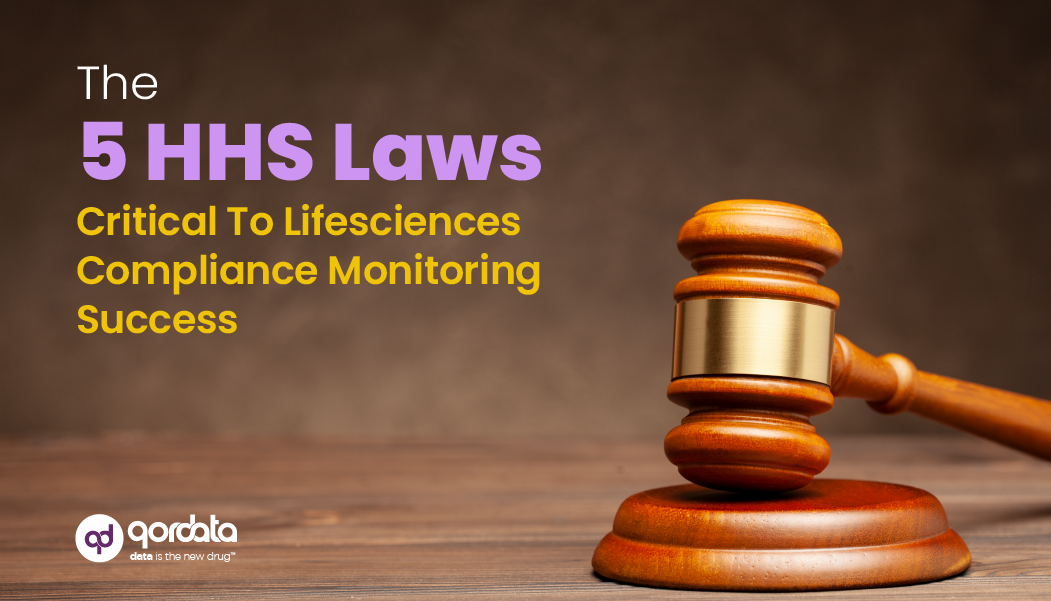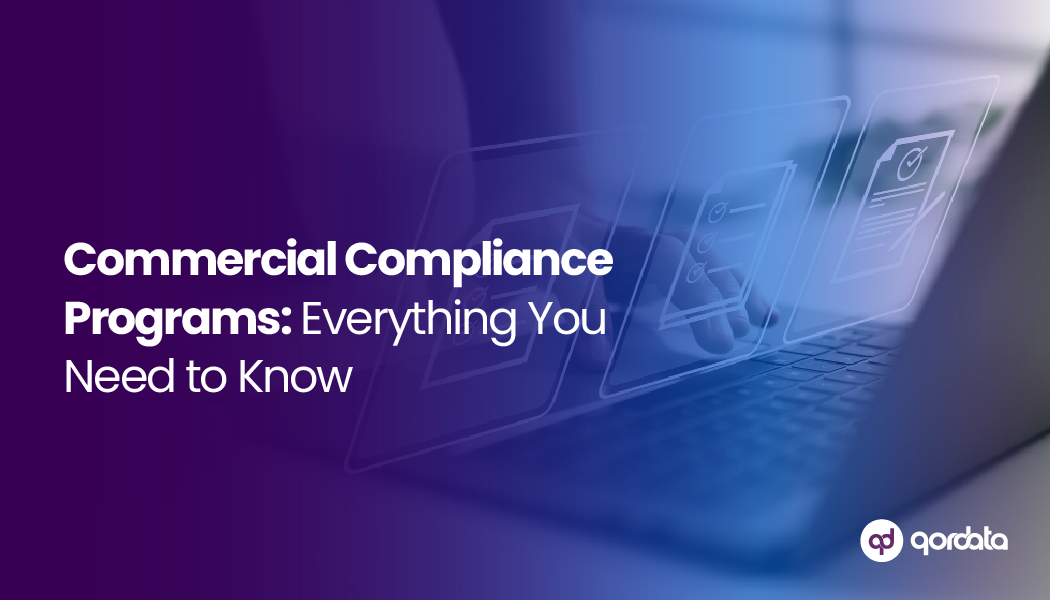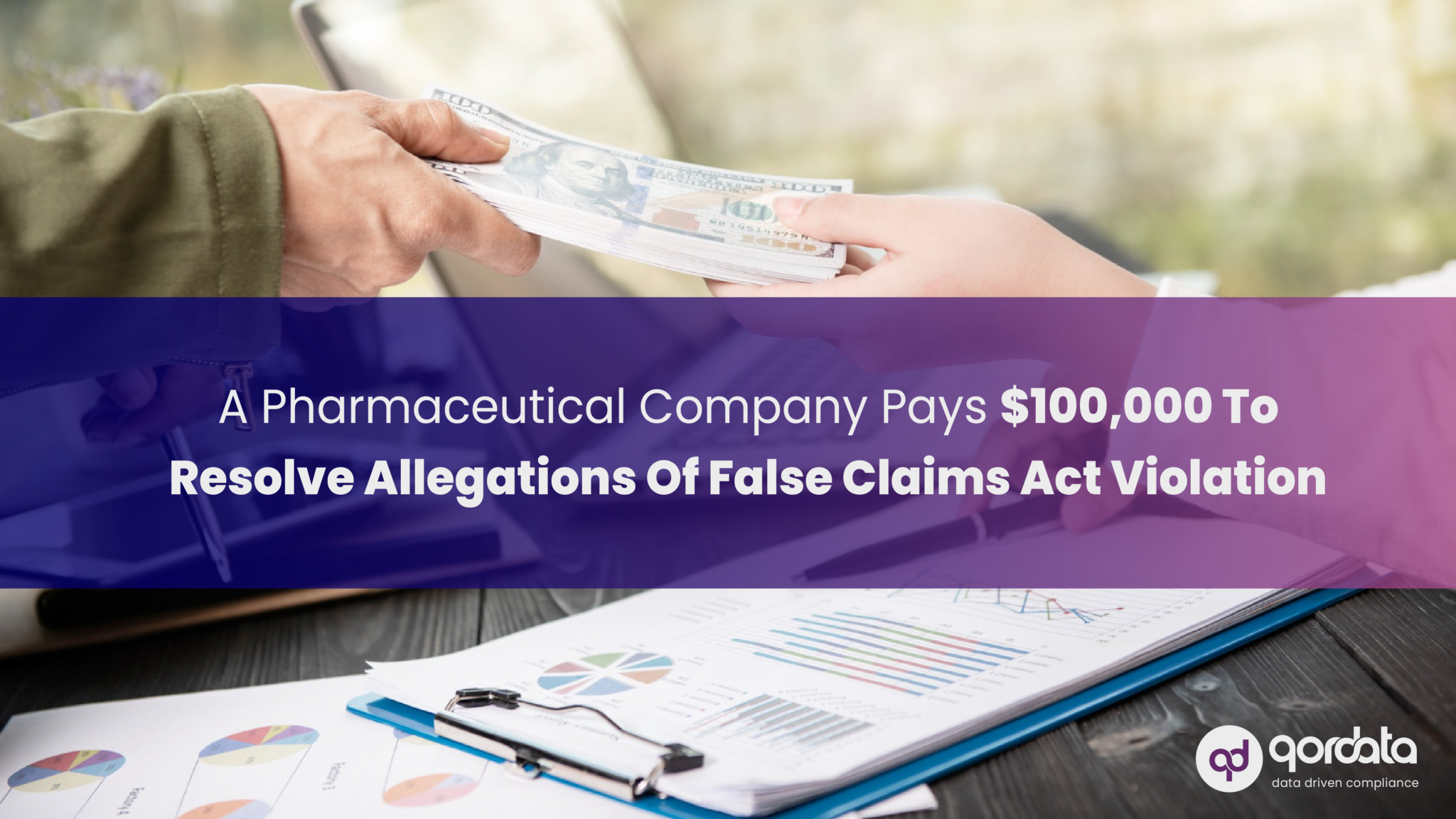The importance of adhering to regulatory demands continues an upward trend. Life science compliance is becoming more complex with heightened regulatory demands and evolving rules and regulations.
With compliance programs playing a crucial role in risk identification, management, and remediation, leveraging a data-driven compliance solution to augment compliance program capabilities seems to be the way forward for organizations and compliance professionals.
However, data analytics is a crucial component of a compliance program that enables compliance professionals to develop key risk indicators, enhance the compliance program’s effectiveness, and proactively prevent the risk of non-compliance.
Let’s explore the role of analytics in life sciences compliance and how compliance professionals can ensure compliance success with analytics.
The Role of Analytics in Compliance
Whether it’s pharmaceutical companies, biotechnology firms, medical device manufacturers, or any other entity within the life sciences sector, analytics has emerged as a powerful tool offering a strategic advantage that goes beyond mere compliance.
By leveraging analytics, life sciences companies can gain visibility into their data, identify potential compliance risks early on, and track compliance performance in various business departments and key risk areas identified by the regulatory authorities, such as patient support program and off-label promotions.
They can also monitor regulatory changes, ensure effective adherence to applicable rules and regulations, optimize resource allocation to strategically shift the focus of compliance professionals where it matters the most, and augment decision-making capabilities.
8 Ways to Ensure Compliance Success with Analytics
- Utilize Analytics for Proactive Risk Assessment
- Monitor Regulatory Changes
- Augmenting the Compliance Program of An Organization
- Optimizing Resource Allocation
- Informed Decision-Making
- Leveraging Technology and Tools
- Compliance Training and Development
- Measuring Success and Continuous Improvement
1. Utilize Analytics for Proactive Risk Assessment
In compliance, businesses today are embracing analytics as a strategic tool for predictive risk modeling. This shift empowers organizations to anticipate and effectively address compliance risks, safeguarding their operations from potential pitfalls.
Analytics plays a pivotal role by delving into historical data and uncovering patterns that may signal emerging compliance issues. These concerns can range from false claims to non-conducive speaker program venues to breach of internal company policies and more.
Predictive risk modeling enables organizations to identify these vulnerabilities early on before the regulatory authorities do and mitigate them proactively to ensure compliance.
- Early Detection with Predictive Analytics
Predictive analytics takes this further, enabling companies to foresee potential compliance issues before they escalate into significant problems.
With advanced algorithms and artificial intelligence, life sciences companies can scrutinize extensive datasets for subtle signs of compliance deviations. Early detection is critical for preventing regulatory breaches and ensuring swift corrective actions.
- A Proactive Strategy for Compliance Challenges
By thoroughly analyzing historical data, companies can assess past compliance issues. These insights become instrumental in crafting tailored risk mitigation strategies.
- Proactive Measures for Sustainable Compliance
Rather than reacting to compliance issues as they emerge, organizations can take an offensive stance. Implementing automated monitoring systems, conducting regular compliance audits, and revising quality control protocols are some of the proactive measures that Life Sciences companies can adopt. By identifying areas with potential compliance vulnerabilities, they can proactively minimize risk and ensure ongoing compliance with regulations.
2. Monitor Regulatory Changes
Failing to monitor and adapt to regulatory changes can lead to non-compliance, which can have serious consequences, including fines, legal actions, and damage to an organization’s reputation.
For life sciences companies, it is crucial to utilize analytics to monitor regulatory changes effectively. It offers a proactive and data-driven approach to ensure organizations comply with the latest regulations and standards.
Here’s a more in-depth look at how analytics plays a vital role in monitoring regulatory changes:
- Real-time Monitoring: Analytics tools are equipped to monitor regulatory changes in real-time. This means the system can detect and report these changes as soon as a new regulation is introduced or an existing one is amended. This real-time monitoring allows organizations to assess the impact of new regulations on their operations promptly.
- Alerts and Notifications: Analytics platforms can be configured to send alerts and notifications to relevant personnel when regulatory changes occur. This ensures that the right people within an organization are immediately informed of the changes, allowing for swift action and adaptation.
- Interpreting Regulatory Updates: Regulatory changes often have complex legal language and technical details. Analytics can help interpret and translate these updates into more understandable terms, making it easier for compliance teams to grasp the implications and necessary adjustments.
- Impact Analysis: Analytics tools can perform impact assessments to determine how regulatory changes will affect an organization’s current compliance status. This analysis helps organizations gauge the magnitude of the adjustments needed and allocate resources accordingly.
- Documentation and Audit Trails: Analytics platforms provide a transparent and auditable trail of how an organization responds to regulatory changes. This documentation is invaluable in demonstrating due diligence to regulatory authorities and can serve as a vital resource during audits or inspections.
- Compliance Checklists: Analytics can create compliance checklists based on the latest regulations. This helps organizations ensure that all necessary compliance requirements are met systematically.
3. Augmenting the Compliance Program of An Organization
Data analytics has become an essential tool for compliance programs. It can enhance and automate many of the tasks involved in compliance, such as creating key risk indicators (KRIs), enhancing risk assessment, prioritization, and mitigation, uncovering patterns and anomalies, monitoring key risk areas, and deriving actionable insights.
Data analytics also enables compliance programs to become more proactive, efficient, and effective. This significantly improves the maturity level of a compliance program as it takes it from being reactive or defensive to being proactive.
Moreover, through data, organizations and compliance professionals can demonstrate their compliance effectiveness to regulators, which is an advantage given that regulatory authorities such as the U.S. Department of Justice have advised life sciences companies to leverage data for their compliance program and regulatory adherence.
Other notable uses of data analytics for compliance programs are the following:
- Anomaly Detection: Analytics can detect unusual or suspicious data access patterns, indicating potential security breaches. By continuously monitoring data access, analytics tools can trigger alerts when unauthorized or unusual activities are detected, allowing for a rapid response to potential threats.
- Threat Detection and Response: Analytics can be employed to identify and respond to cybersecurity threats promptly. Organizations can detect and mitigate security threats in real time by analyzing network traffic, log files, and system behavior, preventing data breaches and downtime.
- Comprehensive Auditing: Analytics tools can provide comprehensive data access and usage audit trails. This auditing capability is vital for tracking and investigating data breaches, ensuring accountability, and demonstrating compliance efforts to regulatory authorities.
- Predictive Analytics: Analyzing historical data and patterns can predict potential security risks and vulnerabilities. This proactive approach allows organizations to take preventive measures and strengthen their data security and privacy measures.
- Employee Training and Awareness: Analytics can assess employee compliance with data security and privacy policies. Organizations can enhance their overall data security posture by monitoring employee behavior and identifying areas where additional training is needed.
4. Optimizing Resource Allocation
Resource allocation is a critical aspect of compliance management within the life sciences industry. The allocation of resources, whether financial, human, or technological, can significantly impact an organization’s ability to meet compliance requirements efficiently.
Analytics is crucial in optimizing resource allocation, ensuring that resources are directed where they are most needed and can have the most significant impact.
Here, we’ll delve deeper into the role of analytics in optimizing resource allocation:
- Data-Driven Insights: Analytics tools provide data-driven insights into compliance processes, allowing organizations to identify bottlenecks, inefficiencies, and areas where resource allocation can be improved. These insights enable organizations to decide where resources should be directed to enhance compliance efforts.
- Cost Optimization: By analyzing historical data and ongoing processes, analytics can help organizations identify opportunities for cost optimization. This can include streamlining processes, reducing unnecessary expenditures, and reallocating resources to more critical compliance tasks.
- Resource Prioritization: Analytics can assist in prioritizing compliance activities based on risk assessment and regulatory changes. By understanding which areas of compliance are most at risk and where resource allocation is most critical, organizations can focus their efforts where they matter the most.
- Efficiency Gains: Analytics tools can pinpoint areas where processes can be made more efficient. This might involve automation, process reengineering, or eliminating redundant tasks. These efficiency gains can lead to more effective use of resources.
- Resource Forecasting: Analytics can be used for resource forecasting, helping organizations plan for future compliance needs. By analyzing past data and trends, organizations can predict resource requirements and allocate resources, accordingly, ensuring preparedness for upcoming compliance challenges.
- Monitoring Resource Utilization: Analytics tools provide real-time monitoring of resource utilization. This helps organizations ensure that resources are being used as intended and compliance activities are progressing according to plan. Any deviations from resource utilization can trigger timely adjustments.
- Balancing Workloads: Analytics can help organizations balance workloads among teams and departments to ensure that compliance efforts are evenly distributed. This prevents resource overload in certain areas and resource underutilization in others.
- Performance Metrics: By establishing key performance indicators (KPIs) and measuring the performance of compliance processes, organizations can use analytics to assess the impact of resource allocation. This data-driven approach enables continuous improvement in resource allocation strategies.
5. Informed Decision-Making
Utilizing analytics for informed decisions allows organizations to assess compliance risks, choose effective strategies for mitigation, and allocate resources more efficiently. It empowers decision-makers with data-driven insights, helping them navigate the complex regulatory landscape with confidence. Furthermore, analytics aids in long-term strategic planning by identifying areas in need of improvement, streamlining resource allocation, and creating proactive compliance roadmaps.
Data-driven compliance policies are crucial for effective adherence to regulatory standards. Analytics enables organizations to formulate and adapt these policies based on analytical insights. By analyzing compliance data and addressing common issues, organizations can refine their policies to align with data-informed decisions. This alignment ensures that compliance strategies are practical and well-suited to address challenges. Ultimately, analytics is instrumental in achieving compliance success by fostering informed decision-making and ensuring that strategies are rooted in data, adaptable to changing requirements, and aligned with compliance goals.
6. Leveraging Technology and Tools
In life sciences compliance, technology and specialized tools are essential for simplifying compliance management, providing data-driven insights, automating monitoring, and enhancing data security. According to a survey conducted by KPMG, 53% of respondents said they want to increase their budgets for technology and data to improve compliance.
Compliance Management Software centralizes compliance activities, while Data Analytics Tools offer data-driven insights for decision-making. Automated Monitoring Systems provide real-time alerts, Document Management Solutions ensure efficient organization of compliance documents, and Risk Assessment Software prioritizes risk mitigation. Artificial Intelligence and Machine Learning optimize processes, Collaboration Tools facilitate teamwork, and Blockchain enhances data integrity. Training Software supports employee compliance training, and Regulatory Alert Systems keep organizations updated about compliance regulations.
7. Compliance Training and Development
Training programs serve as the foundation for fostering compliance excellence. Employees are introduced to the latest compliance regulations and standards, enabling them to effectively identify and address compliance issues. Furthermore, training imparts essential skills in quality control, data security, and privacy, ensuring that products meet rigorous regulatory criteria, and that sensitive data remains secure.
Employees also receive guidance on document management, audit and inspection preparedness, and risk mitigation. These training efforts proactively reduce the likelihood of compliance issues arising and create a culture of continuous improvement. In essence, training and skill development empower organizations to not only achieve compliance but also maintain a solid commitment to quality, security, and ongoing enhancement of compliance practices.
8. Measuring Success and Continuous Improvement
Establishing clear key risk indicators (KRIs) and metrics is vital to assessing the effectiveness of compliance strategies, focus monitoring and remediation efforts on key areas and monitor compliance per regulatory guidance. These metrics may encompass regulatory adherence, product quality, audit outcomes, and data security, among others. Regular performance evaluations enable organizations to identify areas in need of enhancement and proactively address compliance challenges.
Continuous improvement lies at the heart of compliance success. By systematically reviewing processes, identifying weaknesses, and implementing necessary changes, organizations can adapt to evolving regulatory landscapes and maintain high standards of compliance. This commitment to ongoing improvement ensures that compliance strategies remain effective, product quality is upheld, and the organization is well-prepared for any future compliance challenges that may arise.
Conclusion
In this article, we’ve explored the critical role of analytics in life sciences compliance, discussing risk assessment, real-time monitoring, data security, and more. We’ve also highlighted the importance of training and continuous improvement in maintaining compliance excellence.
Leveraging analytics is paramount for long-term success in the life sciences industry. It empowers organizations to make data-driven decisions, adapt to changing regulations, and maintain unwavering compliance commitments. We encourage life sciences companies to embrace data-driven compliance strategies, combining analytics, technology, and training to navigate the dynamic regulatory landscape effectively and ensure product quality, safety, and data integrity.
Other Relevant Reads:



